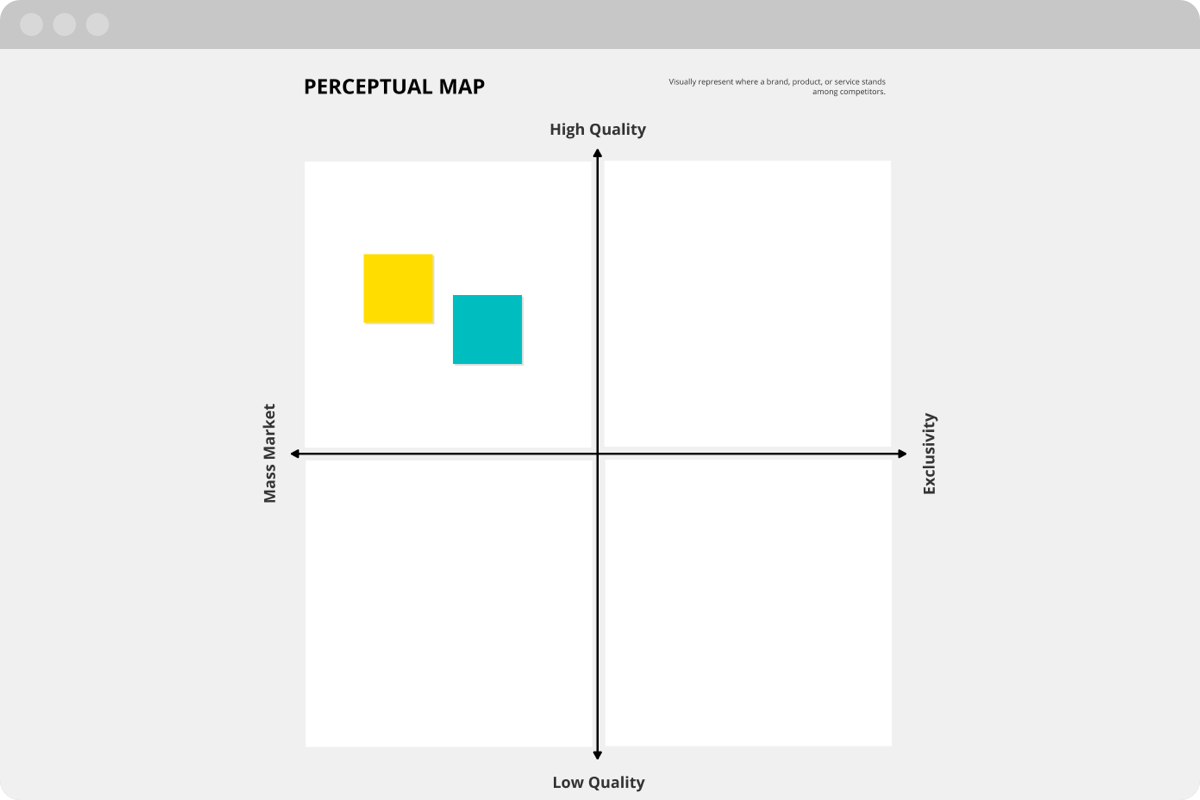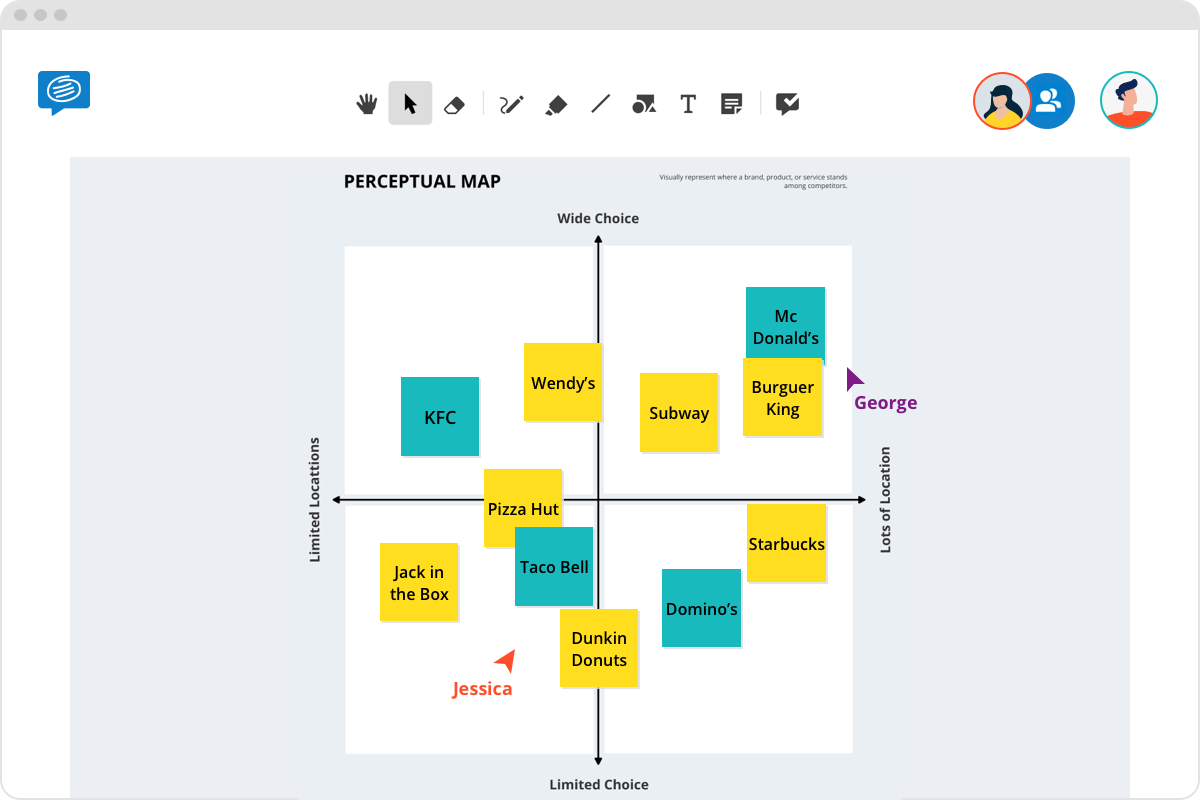Brand Association Map Template
If you want to understand how your company, brand or product is perceived in relation to your competitors, a perceptual map (also known as a positioning map) is the perfect tool. It allows you to visualize where you sit in the market from a consumer's perspective. Using a perceptual mapping template can provide invaluable insight into the success of marketing or PR campaigns, identifying gaps and identify strengths.
Let's take a look at how it works.
What is perceptual mapping?
To make improvements, you first need to understand what your baseline is. When it comes to intangible concepts such as perceived value, this is especially hard but equally important. This is where the brand positioning map can help. It can give you a clear understanding of where you sit in the market: i.e. your baseline.
Marketing teams can use these insights into consumer behavior to deliver targeted marketing campaigns, then compare results with the original baseline.
Perceptual maps are most commonly a four-square grid design, divided along and X and Y axes. These two axes can correspond to any two competing values- it's up to you to decide based on your goals. For example, you might plot quality vs range or design vs performance.
How to create a perceptual (or brand positioning) map online
1. Pick two parameters
The first step is to decide on your two parameters. This will depend on what information you have available, and which industry you're in.
If you are creating a perceptual/ brand positioning map online based on the collective knowledge and experience and assumptions of the market, you will want to choose parameters that are linked to your industry.
If you have access to a market research study or focus groups, then you will need to pull that data and pick out two parameters that can be compared.
Here are just a few examples of product categories and their common attributes from Segmentation Style guide. You'll note that price is not mentioned, as you should try to avoid using price as one of the axes as price and quality are highly inter-related and will skew the results.
- Shoes: Comfort, design, style, quality, functionality
- Instant coffee: flavor, country of origin, quality
- Breakfast cereal: health values, sugar, fun/boring, variety, taste
- Holidays: temperature, travel distance, value, cultural offerings, safety.
- Consultancy: expertise, availability, past results.
This list is by no means exhaustive, so you may also have your own ideas depending on your industry. But in any case, you will need to pick two attributes and plot them on the x and y axes.
2. List your competitors
The next step is to list all your major competitors that offer similar products to you. Aim for 10 to give your map some real depth and insight.
3. Rate your competitors
To start building out your map, begin by giving each of your competitors a rating between 1-5, with one being the lowest and five the highest, for both of your parameters. This will make it easy for you to plot them.
And finally, give yourself a rating, so you know where you fit on the map.
4. Complete your perceptual mapping template
You will now be able to see exactly where you stand compared to your competitors, and potential gaps in the market.
How to use a perceptual mapping template
A perceptual mapping template helps teams work faster and collaborate online with ease. Simply click on the image below to access Conceptboard's collaborative, online perceptual map maker – perfect for remote or distributed teams.

Send the link to your team to collaborate together, and once it's finished you can easily save it in your account or download and share it as a PDF.
Example of a perceptual map:
To help you get a better understanding of what a completed perceptual map looks like, we've put together an example using fast-food chains. Here, we've plotted the outlets based on the number of locations and the variety of menu items. Check it out below.

As you can see, a perpetual map is a great tool to understand what your customers think about you and your competitors. With this information at hand, you can make strategic decisions when it comes to advertising, branding, market expansion and even pricing.
Keep up the momentum and explore our template library with almost 100 templates for all your business needs. Read more
- 10 best strategy planning templates you can use right now
-
Understanding your customer with 3 essential templates
See how Conceptboard is the future of collaboration with a 30 day free trial.
Perceptual Map template
Use the free template with your team & customize as you go!
Use Template
Brand Association Map Template
Source: https://conceptboard.com/blog/perceptual-map-template/







Tidak ada komentar:
Posting Komentar